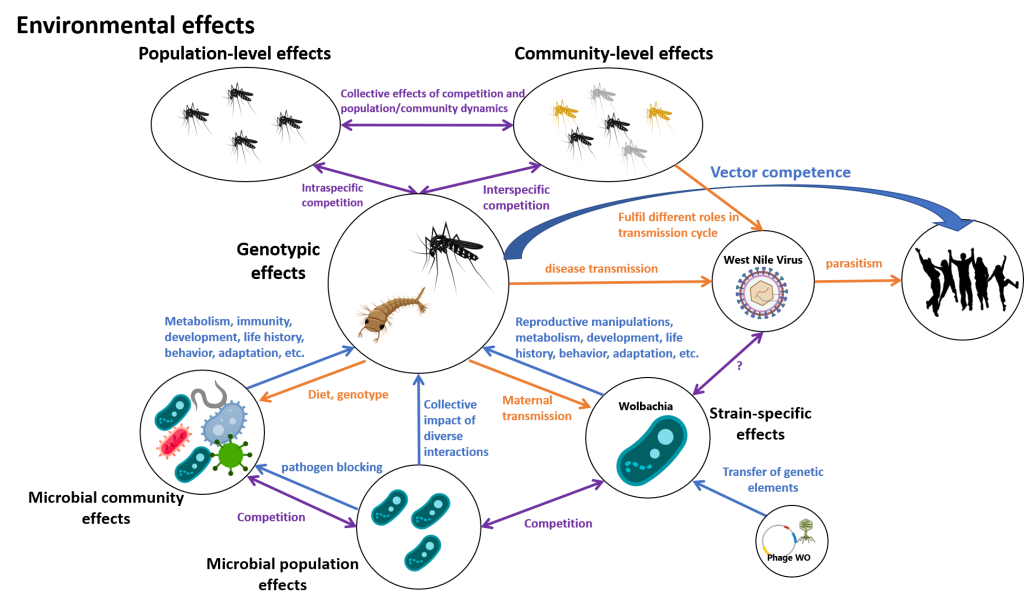Mosquito-Wolbachia Symbioses
Carla Cáceres, Patrick Irwin, Irene Newton, Nina Shearrill, Maeli Sanchez, Ashley Hughes
Prevalence of Wolbachia in mosquito hosts varies greatly between populations and across species. We do not have a strong understanding as to why this variation exists, what mechanisms may explain this variation, what effects this variation may have on life-history traits of the host, or how this variation influences the outcomes of community dynamics including vectorial capacity. My current work aims to address these questions through field surveys involving microbial community profiling and cophylogenetic assessment as well as empirical studies manipulating larval environmental conditions.

Rain Barrels and Mosquitoes
Brian Allan, Andrew Mackay, Catherine Wangen, Maeli Sanchez
Rain barrels are green infrastructure tools used to capture and retain rainwater for outdoor use. Several species of vector mosquitoes complete juvenile development in artificial container habitats. Inadequately maintained rain barrels pose an unexplored risk to human health due to their potential as juvenile mosquito habitats and presence in residential neighborhoods. Surveillance of rain barrels in Champaign County found juvenile mosquitoes in over 50% of households with rain barrels. Statistical analyses revealed having a sealed lid with intact mesh was critical for mosquito reduction, and the implementation of a prescribed intervention method (e.g. Bti) significantly reduced mosquito presence in rain barrels. This work aims to inform vector mosquito prevention methods in green stormwater infrastructure with the goal of decreasing vector-borne disease risk in residential areas.

Previous Research
Mosquito Artificial Container Survey
Patrick Irwin, Dan Bartlett
Culex pipiens and Cx. restuans mosquitoes complete juvenile development in cryptic habitats such as artificial containers and waste tires. We examined commercial sites in Arlington Heights that had a known presence of cryptic habitats with a focus on waste tires stored outdoors. We identified and quantified mosquito species, container conditions, and proximity to the nearest residential parcel. Overall, we found that only 2% of waste tires contained juvenile mosquitoes compared to 27% of other artificial containers. We also observed 15 methods of intervention from 10 businesses after communicating with and educating business owners. This work informs future surveillance of potential cryptic habitat types in close proximity to residential areas and encourages communication with business owners to apply source reduction methods.

Snail-Schistosome Transmission
Dave Civitello, Kelsey Shaw, Raeyan Syed
Differences in host characteristics can impact how parasites spread. Body size, plays a significant role in various ecological interactions, including transmission dynamics. In the case of snails and schistosomes, bigger snails have a higher risk of exposure to parasites but are less likely to get infected once exposed. To understand the impact of size-based variations on population-level transmission, we conducted transmission trials in snail populations with different size structures and compared various size-dependent transmission models. The results showed that populations with a higher proportion of large snails had lower infection prevalence. Additionally, small snails were protected from infection by being around larger conspecifics. The transmission model that fully considered body size in both exposure and susceptibility performed better than other models we explored. Incorporating traits like body size, which are influenced by and influence host ecology, into transmission models could provide valuable insights into the natural dynamics of diseases and ways to mitigate them in various systems.
